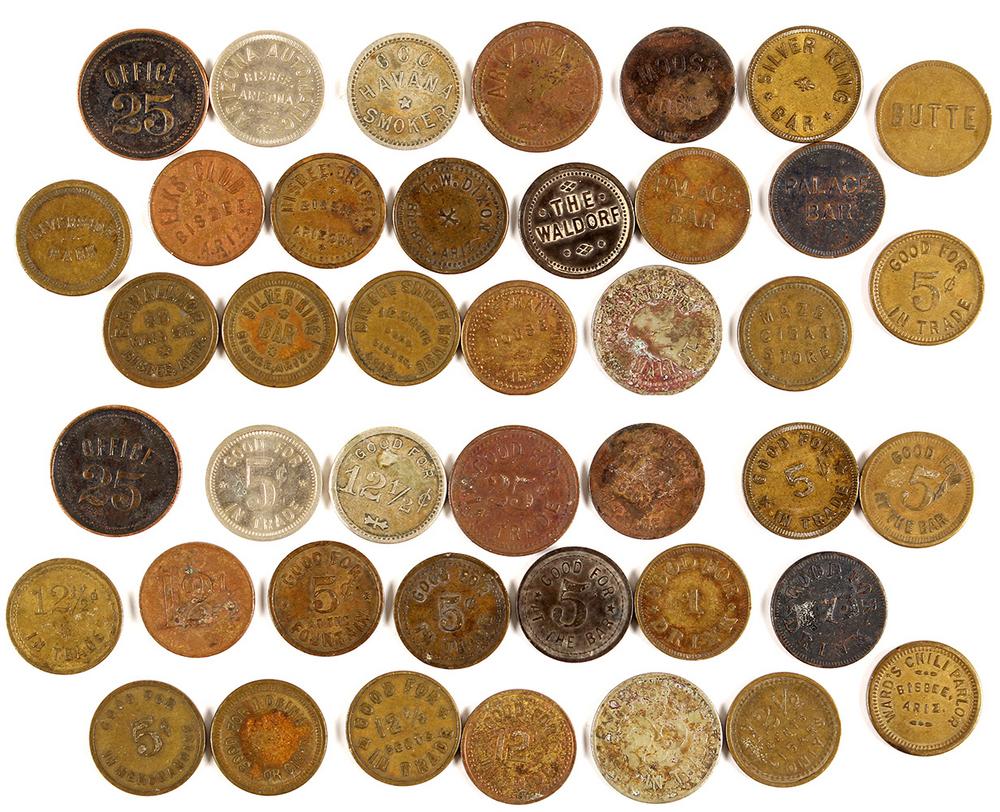The Arizona State Tax Commission token is one of the oldest kinds of sales tax tokens. These are circular coins with a cactus design on one side and the words ARIZONA STATE TAX COMMISSION in the center. These sales taxes were first introduced in 1935 and were used to give change to customers. They have been made of different materials over the years, but today’s version is made of copper. It is approximately 7/8 inches in diameter.
After the World War II, Arizona turned to brass for its tax tokens. The coinage’s costs were too high and the tax became burdensome in the new economy. The post-war law allowed the tax to be incorporated into the selling price, and the tokens’ days were numbered. A 1952 letter from the State’s Tax Commission states that the token system was not used by the public, and that the state’s sales tax collection had ceased. The system was abolished in 1954, but millions of coins remained in circulation.
Arizona’s Sales Tax Tokens: Copper to Aluminum
In the early 1940s, the State Tax Commission of Arizona made a switch from copper tax tokens to aluminum ones. This was due to a number of reasons- aluminum was cheaper to produce and there was a shortage of copper during World War II. While some states switched to paper and celluloid tokens, Arizona never issued any non-metal sales tax tokens.
The copper tokens were first introduced in 1933 and were used until 1944. They were then replaced by the aluminum tokens, which were used until 1946. After the war, the state went back to using copper tokens. However, in 1959, the state switched to a new system and began issuing paper tax stamps instead of tokens.
If you’re a collector of Arizona tax tokens, then you’ll want to keep an eye out for all three types:
- copper;
- aluminum;
- paper.
Each type is unique and has a different value. So start your collection today! Who knows- maybe one day your collection will be worth a lot of money.

Tokens were made of brass before the war, but copper became a popular choice after the war. After the war, Arizona officials underestimated the demand for tax tokens and began using brass. During the post-war period, the burden of paying a fraction of a cent in a single day became too burdensome for the new economy. Eventually, the state allowed the tax to be included in the selling price, and the use of the token system ceased. In 1954, the tax system in Arizona was discontinued due to financial reasons.
Tokens were once made of brass, but after the war, the state switched to aluminum. It was more affordable to produce than copper and zinc, and the war effort made copper and aluminum tokens less desirable. The use of aluminum tax tokens in Arizona lasted until the end of the conflict. While they had limited uses during the time of the Second World War, they were still used by many citizens. The State Tax Commission decided to discontinue the use of the metal-tax tokens in 1952, but they still had a surplus of millions of pieces of hardware.
In 1948, the state switched to brass to produce tax tokens, but the cost of copper was too high. Tokens made of brass were not as durable as copper ones and they were not able to withstand high-temperatures. During the war, the state started producing aluminum tokens in the same way. The state used aluminum for the first time during WWII, but it did not use copper for the rest of the year. In 1953, they stopped manufacturing them.
In 1947, Arizona started making aluminum tax tokens. While copper was cheaper to produce, it was considered a scarce war material. In 1940, the state ceased producing copper tokens, resulting in a shortage of tokens in the state. In the same year, the Arizona state tax commission decided to transition to brass tokens, which were more affordable. A few years later, they phased out the old system.
In the late 1800s, Arizona used brass tax tokens, but during World War II, the state switched to aluminum. While copper was more durable, zinc was scarce. The wartime shortage of copper and zinc forced the state to stop producing metal tax tokens, including Arizona. Despite the need for steel, the state continued to produce metal-based coins. However, the coinage was not used after that, owing to the lack of public acceptance.
In the early 20th century, Arizona began to use aluminum tokens as their sales tax tokens. The metals were cheaper to produce than copper, but they were still expensive. This trend led to the production of brass-based tokens. Eventually, the state used a combination of copper and aluminum for their sales tax tokens. They eventually replaced their copper counterparts with aluminum. In their later years, the minting of their new ones was discontinued.

For over 20 years, numismatics has been an integral part of my life. I’m an expert in the field, including research, grading, and analysis of data. I have written thousands upon articles about this subject. I continue to author reports and update price guides. I enjoy writing and sharing the passion and excitement of the hobby with veterans and new generations. I am analytical, precise, and highly disciplined. These traits have always helped me achieve outstanding results in my career.
